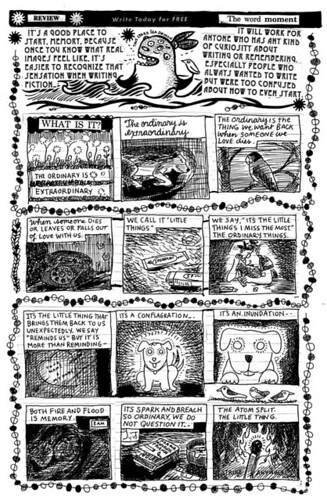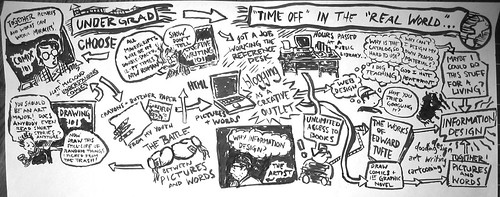Here are a couple more sneak-preview slides for my part of the VizthinkU Visual Note-Taking 101 seminar. I took my map of Carl Jung’s Memories, Dreams, Reflections and broke it down into pictures, modifiers (speech balloons, captions, etc.) and words.
THE POWER OF CAPTIONS: WORDS ADDED TO PICTURES
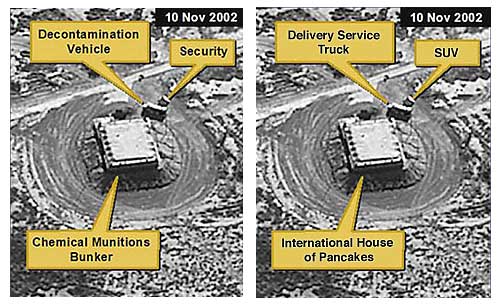
Yesterday, I was thinking about telling a story in pictures without words, and so today, in the aftermath of all the Sarah Palin pregnancy conspiracy theory madness, I started thinking about telling a story with words added to pictures.
The documentary filmmaker Errol Morris had it nailed in his NYTimes article, “Photography As A Weapon,” about photoshopping, forgeries, image processing, captions (and John Heartfield and King Geedorah!):
Doctored photographs are the least of our worries. If you want to trick someone with a photograph, there are lots of easy ways to do it. You don’t need Photoshop. You don’t need sophisticated digital photo-manipulation. You don’t need a computer. All you need to do is change the caption.
I don’t know what these buildings were really used for. I don’t know whether they were used for chemical weapons at one time, and then transformed into something relatively innocuous, in order to hide the reality of what was going on from weapons inspectors. But I do know that the yellow captions influence how we see the pictures. “Chemical Munitions Bunker” is different from “Empty Warehouse” which is different from “International House of Pancakes.” The image remains the same but we see it differently.
Change the yellow labels, change the caption and you change the meaning of the photographs. You don’t need Photoshop. That’s the disturbing part. Captions do the heavy lifting as far as deception is concerned.
If you read through this Daily Kos piece, the writer presents pictures of Palin at various stages of her pregnancy looking thin and trim as “evidence” that she wasn’t really pregnant with her fifth child, but it was her daughter, Bristol, who was pregnant. The article is simply a list of photographs with captions—and the captions control how we read the photographs.
Many folks pointed to this picture as evidence of a Bristol Palin “baby bump”:
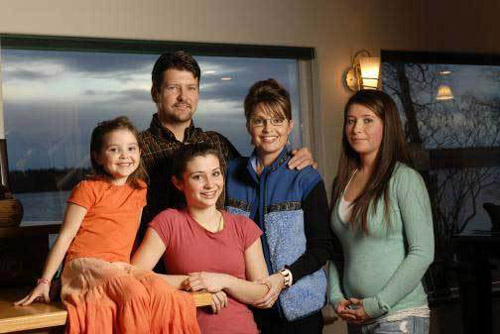
A picture which would otherwise be an innocuous portrait of a nice-looking family is turned into a sinister conspiracy by the words, or caption, adjacent to it.
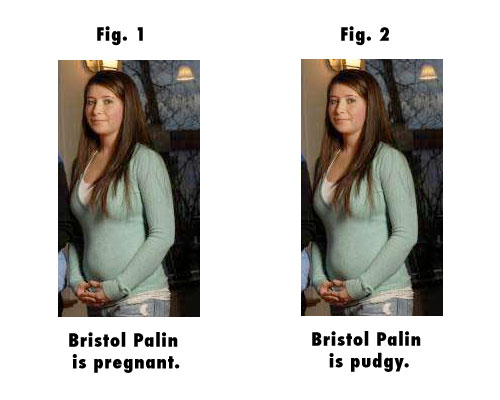
The moral of the story is that pictures can say whatever we want them to say, provided we use the right words.
The power of captions can be used for good, or it can be used for evil. For a cartoonist, it’s a potent weapon, which can take any drawing and turn it in many different ways. Take this hasty doodle:
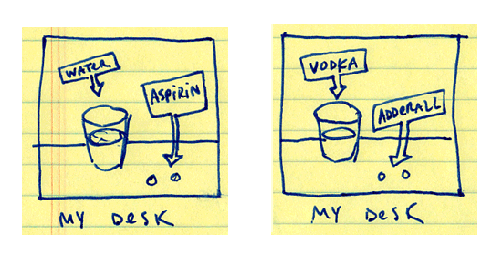
Depending on which captions I use, you’ll get a different picture of who I am, yes? In comics, it seems, the old creative writing adage “show don’t tell” is useless—you can certainly tell as much as you show, show what you tell, or tell what you show.
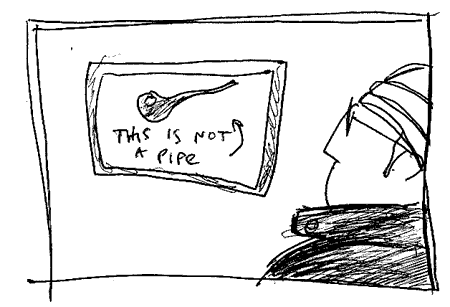
I’d love to hear your own thoughts on the use of captions in the comments below. I also recommend taking a look at Derik Badman‘s article, “Text In Comics.”
VISUAL THINKING
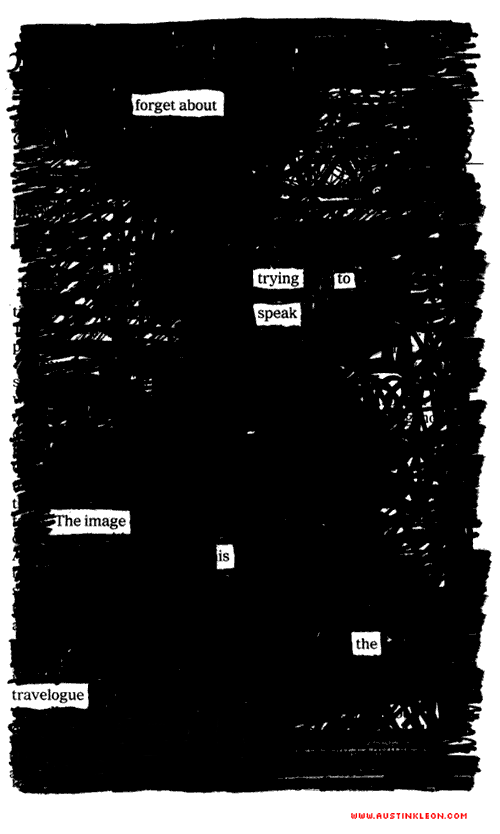
this one is dedicated to lynda barry and her new book which looks amazing
pretty much a paraphrase of this page:
TWO BRILLIANT QUOTES ABOUT CARTOONING
Chris Ware’s Introduction to The Best American Comics 2007
…lately I find myself frequently torn between whether I’m really an artist or a writer. I was trained and educated as the former, encouraged into the world of paint-stained pants and a white-walled studio where wild, messy experiments precipitate the incubation of other visual ideas— though I’m just as happy to sit at a desk in clean trousers with a sharp pencil and work on a single story for four or five days in a quiet and deliberate manner. In short, I’m coming to believe that a cartoonist, unlike the general cliché, is almost—bear with me now—a sort of new species of creator, one who can lean just as easily toward a poetic, painterly, or writerly inclination, but one who thinks and expresses him- or herself primarily in pictures.
A lengthy interview with Anders Nilsen:
When I set out with a clear idea of what I want to do, it becomes super simplistic and neither illuminating to me nor the readers, so that doesn’t work. It sort of just happens by accident, really. I think it’s because I’m interested in these things, so when I draw the first panel, for me to draw the second panel it will have to have dealt with something. The biggest issue is how to get out of your own way, how to explore issues without forcing it, without forcing yourself to do it. If you do ten pages of comics that are just not interesting, you’ve just got to throw it away.
MORE MAPPING
Here’s another map I did with the ol’ sumi-e brush for an essay I’m working on. The piece of paper was really huge, so I had to take a photo with the digital camera. I had all this random junk floating around my head for the essay, but I couldn’t figure out how to put it in linear, narrative form. I started out thinking this would be another radial map (I started with the black box in the bottom-middle), but it ended up with a horizontal flow (what you see is only the top half of the sheet). This was a happy accident, and in the process of drawing the map, I realized the narrative that was hiding amongst all the random junk.
The quote by McCloud in the top, lefthand corner is from chapter 6 of UNDERSTANDING COMICS, “Show and Tell.” Notice the creative writing professor repeating the mantra of workshop: “Show, don’t tell!”
(I should note that even though I often take shots at creative writing workshops, my own workshop professor was wonderful: I took all my workshops at Miami from him, and he is still a good friend of mine. He’ll even be at the wedding!)
